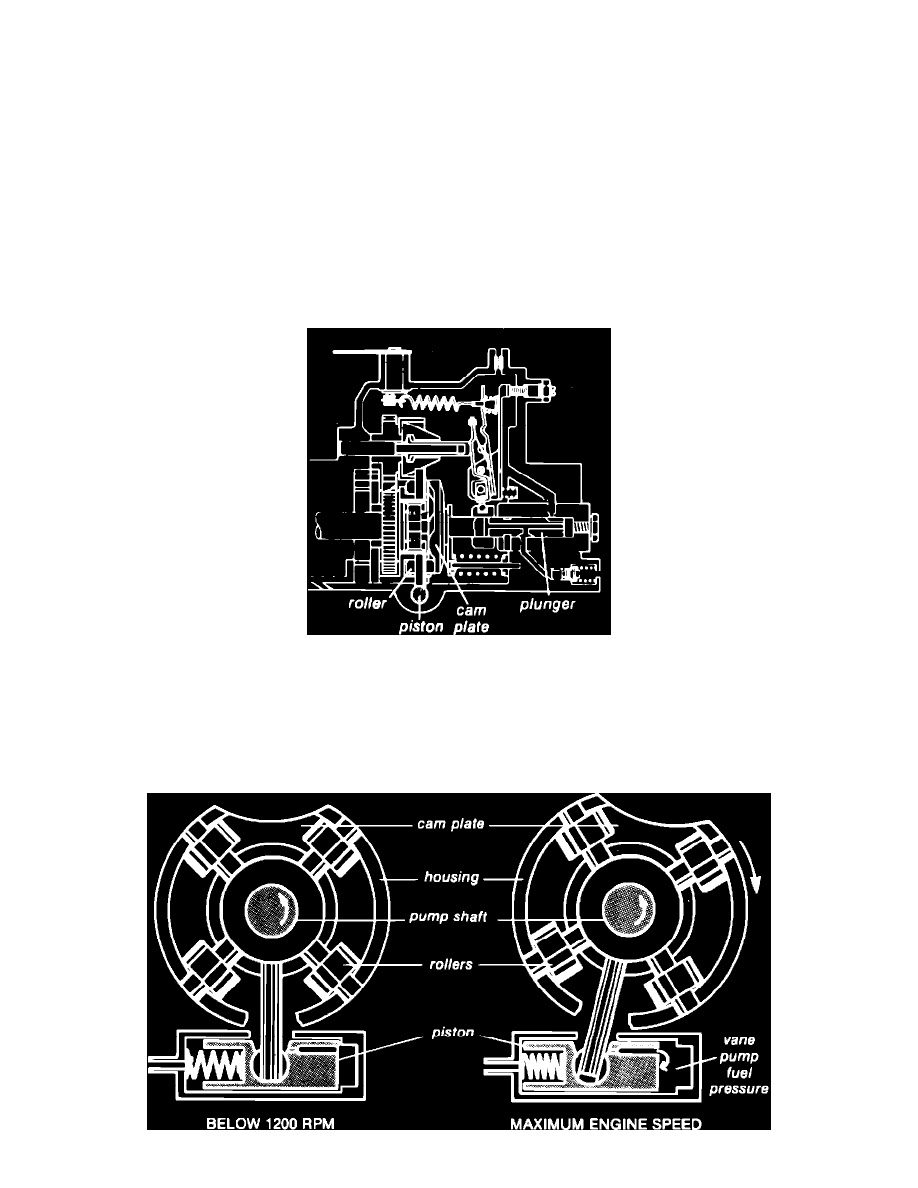Quantum L4-1588cc 1.6L DSL SOHC Turbo (1982)

takes for this to occur is basically independent of engine speed, and yet with increasing engine speed the angle of crankshaft travel between the start of
pump delivery and the start of actual injection at the nozzle also increases. A correction is therefore necessary: injection timing must be advanced with
increasing engine speed.
Propagation time for the pressure wave is determined by the line's dimensions and the speed of sound in Diesel fuel, which is approximately 1500 m/s.
The interval represented by the propagation time is referred to as injection lag. Thus the start of injection proper from the injector lags behind the
beginning of delivery from the pump. Because propagation time is virtually constant the injection nozzle effectively opens later at high engine speeds
than at low engine speeds.
After the injection process, it takes a certain amount of time for the Diesel fuel to atomize and mix with the air to form a combustible mixture. This
interval too is independent of engine speed; in Diesel terminology it is called ignition lag. Ignition lag is influenced by the fuel's combustibility (as
defined by the cetane number), compression ratio, air temperature and fuel atomization. As a rule, it amounts to about a millisecond.
If the beginning of injection is not varied as engine speed increases, the crankshaft rotates a larger and larger angle between that point and the
beginning of combustion, so that combustion no longer starts at the right instant as far as piston position is concerned. Because a Diesel engine's best
power output is obtained only when combustion is correctly timed relative to crankshaft/piston position, injection timing must be advanced with
increasing engine speed to compensate for injection and combustion lag. That is the function of the timing-advance device.
Construction
Fig. 23 Advance piston location
The hydraulic timing-advance device is built into the distributor pump's underside, at right angles to the pump's longitudinal axis; the timing piston is
guided by the pump housing, Fig. 23. The housing is sealed by a cover at both sides. On one side of the piston is a fuel inlet bore, on the other side a
spring. A sliding block and an actuating pin connect the piston with the roller ring.
Operation
